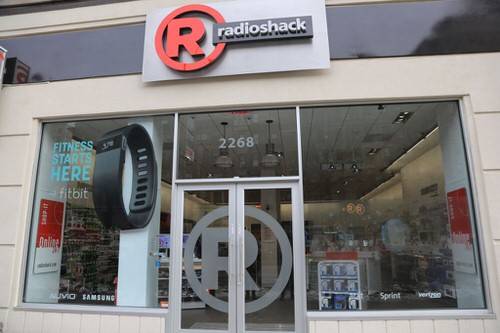
ReadWriteBody is an ongoing series in which ReadWrite covers networked fitness and the quantified self.
My local RadioShack—yes, those are still around—just got a makeover as part of a nationwide revamp. Part of the new look is a big, prominent display of fitness wearables.
The Shack is far from alone in stocking up on wearables. Best Buy has a big selection now, as does Target. Fitbit has been dominating retail so far, according to Canalys, with almost half the market in the first quarter of the year. But I also noticed Jawbone Up bands, LifeTrak fitness watches from Salutron, and a number of smaller brands at RadioShack.
They Can Get It For You Retail
Does retail distribution matter for wearables? After all, we live in an age of e-commerce. Pebble CEO Eric Migicovsky told me earlier this year that the company’s online store is its best channel for selling smartwatches. The company’s pastel-colored Pebbles, for example, are only available online. But Pebble has also performed well at retail, according to Canalys. And shelves in retail stores are a place where people who haven’t heard of Pebble may discover the device for the first time.
Poor retail distribution may have been one of the problems that doomed the Nike FuelBand, which was only available at Nike and Apple stores and “select authorized retailers,” according to the Nike website. Fitbit’s line of bands was simply easier for people to get their hands on.
Selling through retailers comes with its own host of problems, from stocking inventory to dealing with returns to waiting for payment. It’s easy to understand why some smaller upstarts in the wearables business follow Pebble’s lead in seeking preorders through crowdfunding websites before they try to battle for shelf space.
More In Store
But I also wonder if wearable makers are thinking broadly enough about their retail opportunities. Salutron, for example, sells its LifeTrak bands at Walgreens drugstores, where it hits a demographic that’s more worried about health than fitness.
More fashionable wearables, like Ringly or the Tory Burch Fitbit line, might fit into department stores. Macy’s, which sells a variety of gadgets today, as well as a lot of watches and fitness apparel, barely stocks any wearable devices. That’s a green field for retail sales.
Perhaps it’s a blind spot for the people developing wearables, who are far more likely to shop at Amazon than Target. E-commerce might do well to reach people who know they already want a device. But to reach the millions of people who can’t picture themselves wearing one more gadget, stores may be the way to market.
Lead photo by Jason Tester Guerrilla Futures; photo of RadioShack by Christen Rochon for DivasandDorks.com




















